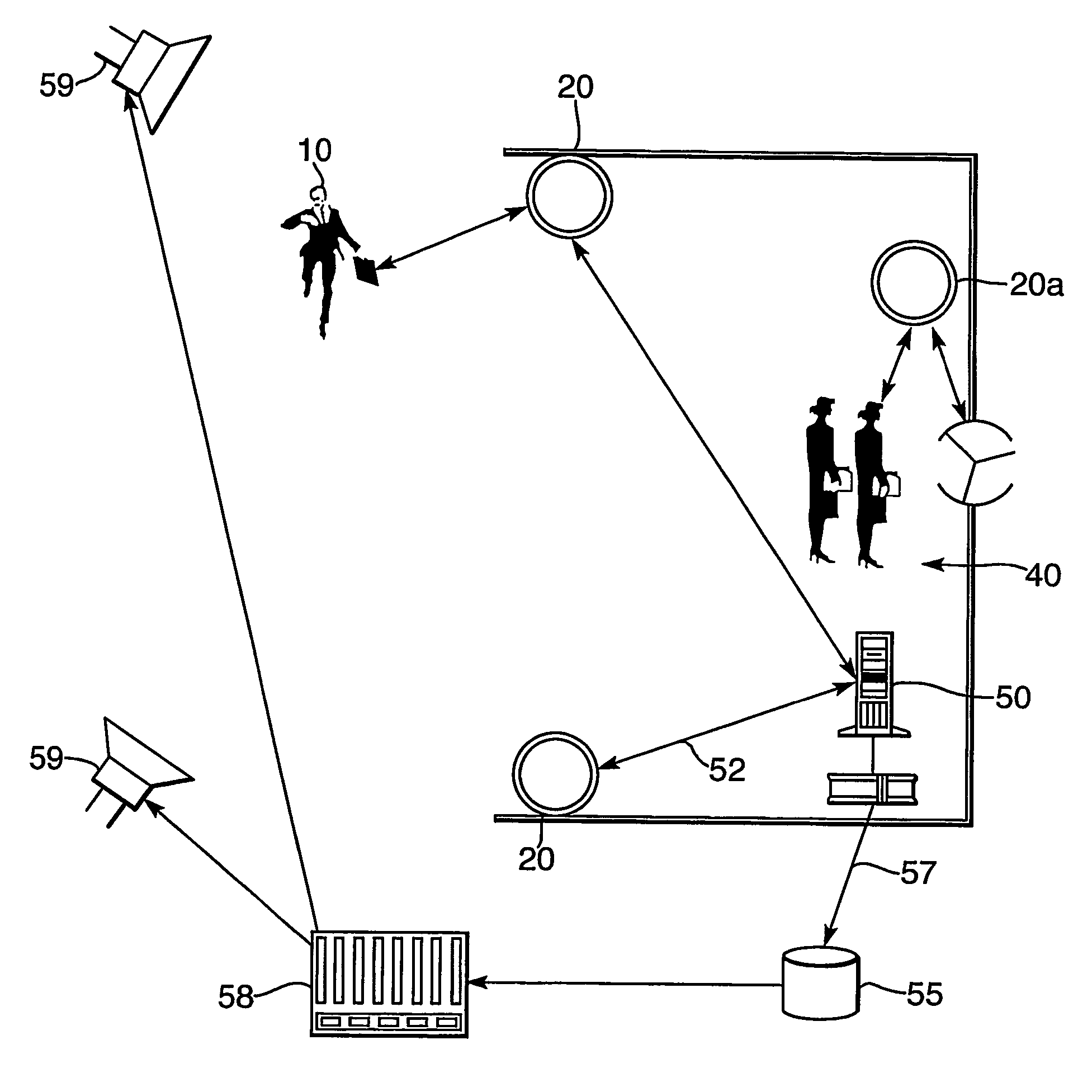Method and System for Assisting the Passage of an Entity Through Successive Zones to a Destination
a technology of successive zones and methods, applied in the field of methods and systems for assisting the passage of entities through successive zones to a destination, can solve the problems of no method which can track the progress of passengers, vehicle crews, on-board staff and/or luggage, and can be an issue for operators and passengers alike, so as to reduce the likelihood of process failure and reduce the overall cost
- Summary
- Abstract
- Description
- Claims
- Application Information
AI Technical Summary
Benefits of technology
Problems solved by technology
Method used
Image
Examples
Embodiment Construction
[0111] The embodiments below describe the operation of the present invention in a transport environment. For ease of reference, the following terms will be used in the description of these embodiments:
[0112]“Vehicle” includes but is not limited to a means of transport, such as a plane, lorry, bus, train, car, boat, etc. and may be civil or military in nature;
[0113] A “passenger” is a person or a group of persons who need to reach a given location (the “departure area”) at a given time to embark or disembark from a vehicle—as used below this term also includes the crew of a vehicle, who also need to reach a given location at a given time in order for the vehicle to depart;
[0114]“Luggage” is an item or a collection of items or cargo, which may be in some way associated with a passenger, and which needs to reach a given location (the “departure area”) at a given time in order to be placed on or removed from a vehicle;
[0115] A “vehicle operator” is the operator of one or more vehicl...
PUM
 Login to View More
Login to View More Abstract
Description
Claims
Application Information
 Login to View More
Login to View More - R&D
- Intellectual Property
- Life Sciences
- Materials
- Tech Scout
- Unparalleled Data Quality
- Higher Quality Content
- 60% Fewer Hallucinations
Browse by: Latest US Patents, China's latest patents, Technical Efficacy Thesaurus, Application Domain, Technology Topic, Popular Technical Reports.
© 2025 PatSnap. All rights reserved.Legal|Privacy policy|Modern Slavery Act Transparency Statement|Sitemap|About US| Contact US: help@patsnap.com



